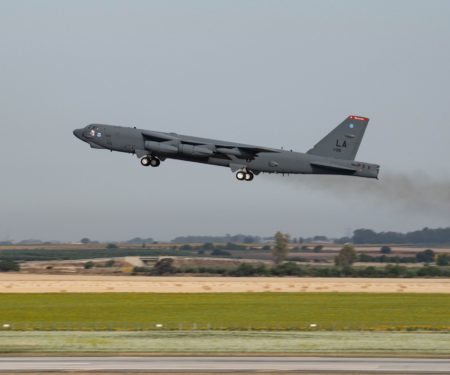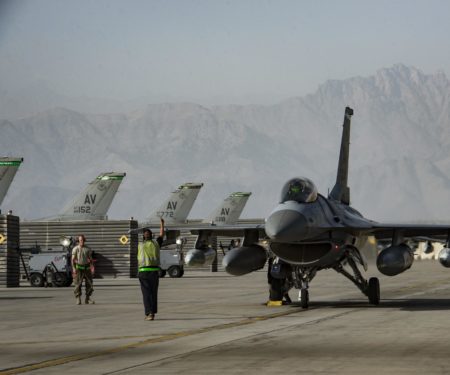Radar Sweep
Department of Defense Releases 2022 Military Intelligence Program Budget Request
The Department of Defense released the Military Intelligence Program (MIP) top line budget request for 2022 on June 1, asking for $23.3 billion. That marks a very slight increase from 2021 and 2020, when the department asked for $23.1 billion. As usual, no other MIP budget figures or program details were released, as they remain classified for national security reasons.
A Year Without Combat Deaths: This Memorial Day, Military Fatalities Overseas Were the Fewest Since 9/11
In the year since Memorial Day 2020, just 18 service members died while supporting overseas operations, including three Airmen. That’s the lowest total the U.S. military has had since 2001, when 11 service members died. None of the 18 deaths in the past year happened in combat—there hasn’t been a service member killed in action since March 2020. “While there have been fewer combat losses overseas, we continue to see steep increases in military and veteran deaths at home due to suicide and illnesses as a result of exposures to toxins,” TAPS spokesperson Leigh Edmonds said.
PODCAST: Engineering the Future: Air Force S&T
Maj. Chris Olsen has worked as an engineer on highly sophisticated programs in the Air Force’s science and technology portfolio, including manned-unmanned teaming and autonomy. Speaking with John Baum from AFA’s Mitchell Institute for Aerospace Studies, Olsen explains how the Air Force identifies challenges, explores how technology can be part of the solution, and then invents the tech needed to fulfill that solution.
SPONSORED: DOD’s Data-Driven Future: Shared Knowledge, Near Real-Time Answers
The impact of data-driven decision making reaches far beyond strategic planning. While data is essential to creating and maintaining a competitive advantage over adversaries, data-driven decision making applies to everything from warfighter responses under battlefield conditions to logistics and maintenance. The first two parts of this series discussed how meeting the goals of shared data mandates, including ABMS and JADC2, will require users across the DoD to be able to access authoritative, up-to-the-second data from across all sources. Those articles also covered how data can be secured and compartmentalized, and can also amplify cybersecurity, helping to mitigate threats before they impact the mission. In this final article, Elastic looks at what near real-time answers from comprehensive data can mean for real-world situations.
Senate Confirms Pentagon Finance and Intel Chiefs
The person responsible for overseeing the Pentagon’s $715 billion budget has been confirmed by the Senate. Michael McCord was confirmed by unanimous consent to the role of undersecretary of defense (comptroller) on May 28, just before the Memorial Day recess. McCord previously served in the position from 2014 to 2017. The Senate also confirmed Ronald Moultrie, for the job of undersecretary for intelligence and security, the top civilian intelligence role at the Defense Department.
DOD Seeks Boost For Defensive Cyber Tech In 2022 Budget
The zero trust security model will likely be key to protecting the Defense Department’s systems in the future, as the agency’s 2022 budget request included $615 million earmarked for “imbedding zero-trust architectures.” In addition, the department is requesting more than $980 million for cryptology as part of a spending boost on defensive cyber technology and a corresponding drop in money for overseas “hunt forward” operations. Overall, the top-line DOD cyber budget request rose by $600 million to $10.4 billion compared to the $9.8 billion requested for FY 2021.
Russia, China Hope to Secure Partners for Moon Base Project
At the Global Space Exploration Conference 2021, running from June 14-18 in St. Petersburg, Russia, the Russian and Chinese space agencies are hoping to secure partners for their plan to construct a robotic moon base ahead of potential crewed lunar missions. The two agencies agreed to work together and share technologies as part of their International Lunar Research Station project and sent out invitations seeking more partners in April. The project would unfold in phases, culminating in long-term human presence at the lunar south pole for 2036-2045.
OPINION: Is the Biden Administration Proud of its Pentagon Budget?
“If you want to minimize the attention given to a particular bit of information, says Washington’s conventional wisdom, release it late on Friday — before a long weekend, if possible. That’s what the Biden administration has done with its 2022 budget proposal. If they were proud of it, the administration would have released the budget request on a Monday or Tuesday, stirring up a political media frenzy to feast on all week long. They’d have flooded airwaves with Biden officials and backers extolling the president’s virtues, doing all they promised to do on the campaign trail just eight months ago. Instead, this was the equivalent of turning in a late homework assignment by slipping it under the professor’s door after he’s left town. It was the bare minimum,” writes Executive Editor Kevin Baron.
To Stem Suicide and Sexual Assault, the Air Force Dons Headsets
A new virtual reality program unveiled by the Air Force aims to target two problems that continue to vex military leaders: suicide and sexual assault within the ranks. Years of prevention training—often in the form of somnolence-inducing PowerPoint presentations—have done little to stem the rates of either problem. Whether the virtual reality model can ultimately do better remains an open question. But military officials are encouraged by the early self-reported responses to the training—97 percent of those who have tried it thus far would recommend it.
20-year Deal Expands Air Force Training Sites in Cibola National Forest
High elevation, extreme temperatures, and difficult conditions all make Cibola National Forest in New Mexico an ideal testing ground for Air Force pilots, especially when simulating the terrain and conditions of the Middle East. That’s set to continue for the near future as the USAF and the National Forest completed a permit to allow pilots to train there for the next 20 years. The permit applies to two groups at Kirtland Air Force Base: The 351st Special Warfare Training Squadron, which uses the lands for mountain rescue training, land navigation, and other tactics, and the 58th Special Operations Wing, which trains more than 1,000 Airmen per month in several aircraft.
How SpaceX Could Become Space Force's No. 1 Defense Contractor
As the U.S. Space Force’s budget increases, the service has just 77 spacecraft, but that could grow over time as the cost of spaceflight comes down, and contractor SpaceX boasts a potentially important role in that thanks to its Starship rocket, which could function as a refueler for other spacecraft and satellites in space. Starship rockets could also function as spacecraft in their own right once they leave the atmosphere and enter the vacuum of space—and their cost would be lower than that of KC-46.
Tuskegee Airmen Honored with Ceremony, Unveiling of Statues at Palm Springs Air Museum
The Palm Springs Air Museum, one of the top air museums in the world, unveiled bronze statues of four Tuskegee Airmen on Memorial Day, commemorating the historic aviation group composed of Black pilots, navigators, bombardiers, instructors, aircraft and engine mechanics, control tower operators, and other maintenance and support staff. Three Tuskegee Airmen were in attendance for the unveiling ceremony, as well as friends and loved ones of other Airmen.




